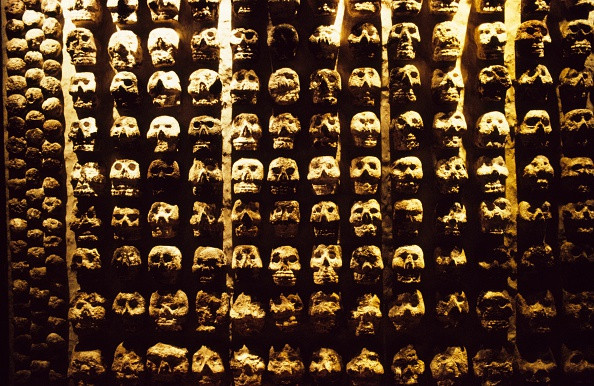Spine-chilling Aztec skull masks in Templo Mayor were sacrificed noble warriors
Archaeologists have long been puzzled by gruesome skull mask offerings found in Templo Mayor - one of the most majestic temples that remains of the Aztec civilisation. Now, a team from the University of Montana says it may have discovered who the skulls belonged to.
The skull masks are elaborate, decorative creations. Sophisticated techniques were employed to modify them, including removing the back part of the cranium, inserting blades, stones and inlays in the eyes and nose, and in some cases, colouring them with dye.
The resulting skull masks were placed in racks known as "tzompantli" in temples such as Templo Mayor - located in the Aztec capital, Tenochtitlán.
While archaeologists thought the skulls were those of the victims of bloody human sacrifices - another trait of the Aztec Empire - they struggled to explain why some skulls were chosen to become masks and not others.
Noble soldiers
The latest study of these morbid objects, published in the journal Current Anthropology, uses experimental archaeological methods to understand how the skulls were selected and manufactured into masks.

The researchers compared eight skull masks with thirty unmodified skulls recovered from sacrificial offerings made under the rule of Axayacatl (AD 1469–1481), as well as with 127 skulls of fighters who died during "military encounters". They looked for differences in age-at-death, sex, and health status.
The team discovered that all the skulls transformed as masks belonged to individuals who were all male, aged between 30 and 45-years-old and in remarkably good health compared to the rest of the population. In particular, they found no traces of dental disease or nutritional stress.
Comparing the forms of the teeth, they were also able to trace back the skulls to various locations within the Aztec Empire, such as the Toluca Valley, the Gulf Coast, and the Valley of Mexico.

Taken together, these details suggest the victims were fighters of noble origin, which would explain their good health. They may have been captured during a battle and taken to the temple to be sacrificed, but owing to their noble lineage - and unlike other sacrificed soldiers - their skulls received a special treatment. They were transformed as elaborate objects with a spiritual value.
Analysing the cut marks and the holes made on the skulls to create the masks, the researchers also say the technique employed to transform them was similar to the one used to manufacture some of the artefacts that were recovered at Templo Mayor. They thus believe the masks were made on-site following the sacrifices.
© Copyright IBTimes 2025. All rights reserved.






















